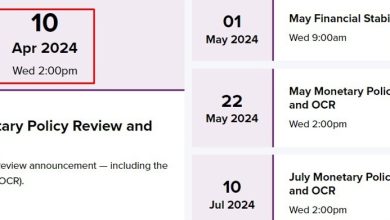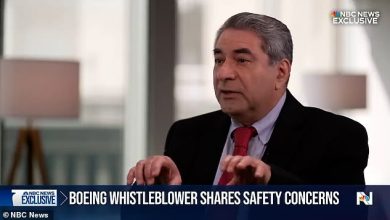EPA Cracks Down on Hazardous ‘Forever Chemicals’ in Drinking Water

- The Biden administration for the first time set limits on PFAS levels in drinking water.
- These “forever chemicals” are linked to certain cancers, reduced fertility and other health problems.
- Water officials have five years to comply with the new limits.
The Biden administration is tackling toxic “forever chemicals” that are prevalent in America’s tap water, food and household products.
The EPA finalized the first-ever limits on PFAS levels in drinking water on Wednesday, placing the chemicals in the same class as other well-known pollutants like lead, arsenic and nitrate.
PFAS are called “forever chemicals” because they do not biodegrade and accumulate in the environment and in our bodies over time, creating a danger to human health. Peer-reviewed studies have linked them to certain cancers, decreased fertility, reduced vaccine response, high cholesterol, and developmental delays in children.
“This is by far the heaviest and most difficult decision in the last 30 years to protect drinking water,” Ken Cook, president of the Environmental Working Group, told reporters.
He added that the monitoring group began looking for PFAS more than two decades ago and found PFAS everywhere they tested, including in umbilical cord blood.
The chemicals were initially developed in the 1940s to make nonstick cookware, then exploded into the manufacturing of clothing, carpeting, food packaging, and firefighting foam used by airports and military bases for extinguishing jet fuel fires. Companies that manufacture PFAS have also dumped the chemical into waterways, landfills and unlined pits in states like North Carolina and Minnesota.
EPA Administrator Michael Regan announces new drinking water limits in Fayetteville, North Carolina, where residents learned in 2017 that a river was heavily contaminated with PFAS pollution from a factory manufacturing company owned by Chemours and DuPont before it.
“This action will prevent thousands of deaths and reduce tens of thousands of serious illnesses,” Regan told reporters, citing EPA estimates of the impact of drinking water limits.
There are thousands of different types of PFAS manufactured today. The EPA is regulating six of them based on research linking them to hazards and showing they are prevalent in drinking water, David Andrews, EWG deputy director of investigations and senior scientists, told BI .
They include PFOA and PFOS which persist in waterways and the environment, although they have been phased out in the United States since the 2000s. The EPA has stated that these two chemicals are not actually safe at any level, but the lowest level that modern laboratories can detect in drinking water is 4 parts per trillion – the limit set by the agency.
The limit for several other chemicals is 10 parts per trillion. The EPA also set limits for mixtures of two or more PFAS chemicals because research shows they can have combined health impacts.
States and local water officials will have five years to comply with the new limits: three to test PFAS levels; and if they exceed federal limits, another two years to install technology that purifies the water. The administration is making $1 billion in grants available to allow public water systems and private well owners to install treatment technology.
Senior administration officials have said they expect up to 10% of the U.S.’s 66,000 water systems will need to take steps to comply. This means the vast majority will not detect PFAS levels above the new limits. But that’s just an estimate, they added. The first three years of sampling will indicate the true extent of the problem.
“The technology exists, particularly for purifying drinking water, to filter these compounds out of the water, so it becomes a question of cost and political feasibility,” Andrews previously told BI.
“The agency has known about the harm these chemicals can cause for decades,” he added. “For too long, many people across the country have been drinking water contaminated at levels that could impact their health.”
The Biden administration has a broader $9 billion PFAS strategy that goes beyond drinking water, including military bases, airports and food packaging.
The FDA said in February that paper food packaging – like fast food wrappers, microwave popcorn bags and takeout pizza boxes – is no longer made with certain types of grease-fighting PFAS . Voluntary elimination has eliminated the main source of exposure from our food, the agency said. However, there are lingering stocks of packaging containing PFAS that could take months to be used up.
Some scientists told BI that while these steps are important, they are not enough to control PFAS contamination.
“It’s better than no regulation, but it’s really just a band-aid solution to the whole problem,” said Carmen Messerlian, professor of reproductive environmental epidemiology at the TH Chan School of Public Health from Harvard, which studies PFAS. “We should be regulating the entire class of chemicals and stopping companies from making them, rather than trying to regulate the amount in our water.”
Correction: April 10, 2024: An earlier version of this article misspelled Carmen Messerlian’s last name.
businessinsider





